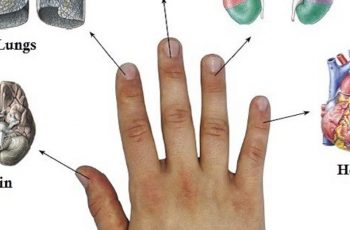Throughout history, some of the most creative artists, actors, musicians, and intellectuals have proven to be among the most volatile in temperament, often experiencing significant mood swings and personality disorders.
Some such as painter Vincent Van Gogh, composer Beethoven, and writers Virginia Woolf and Silvia Plath became quite notorious for their outbursts — often displaying erratic behavior littered with violent outbursts.
Though the aforementioned lived long before the introduction of mood stabilizing pharmaceuticals, it is certain that if they were alive today, they’d be among the millions of people prescribed drugs to help level their emotions/mood. Unfortunately, this scenario doesn’t require any great stretch of the imagination, considering almost seventy-nine million Americans take some form of psychiatric drug — including over a million children under the age of five.
But, at what cost?
A Modern Take On The Classic Temperamental Artist
Throughout history, many great thinkers and artists have been known to possess “eccentric” personalities, exemplifying behaviors that could be considered downright bizarre.
Thankfully, there was a time that society overlooked such behavior and gave many of these individuals a relative wide-berth of freedom to express their gift as they recognized the creative genius within.
Today, we might classify these same people as eccentric, or bipolar — a chronic mental illness or extreme changes in mood, alternating between euphoric mania and the depths of depression. The episodes can occur a couple of times a week or just a few times a year.
There are three primary types of the disorder, which include:
Bipolar I: One or more manic cycles either before or after a depressive episode.
Bipolar II: One or more major depressive episodes lasting at least two weeks, with a mild manic cycle lasting at least four days.
Cyclothymic Disorder: Cycles of mild mania and depressive episodes that last for two years or longer. The mood swings are generally less severe in this particular form of the disorder.
Even though there are different categories of the disorder, the symptoms tend to be similar in most people. Here are the most common exhibited traits:
Mania
- Overly happy or outgoing mood for a long period of time
- Severe irritability
- Talking quickly, rapidly transitioning different ideas during a conversation, or having racing thoughts
- Inability to focus
- Starting numerous new activities or projects
- Feeling very fidgety
- Sleeping too little or not at all
- Acting impulsively and partaking in dangerous behaviors
Depression
- Persistent feelings of extreme grief or despair (depression) for a long period of time
- Loss of interest in activities that were once enjoyable
- Sleeping too much or too little
- Thinking or talking about death or suicide
- Attempted suicide
- Difficulty concentrating, remembering, and making decisions
- Irritability or anxiety
- Eating too much or too little
Hypomania
Hypomania symptoms are the same as mania symptoms, but differ in two distinct ways:
- With hypomania, mood swings usually aren’t severe enough to interfere significantly with a person’s ability to carry out daily activities.
- No psychotic symptoms occur during a hypomanic episode. During a manic episode, psychotic symptoms may include delusions, hallucinations, and paranoia.
What these clinical classifications fail to address is that in many cases, the disorder is also linked to high levels of creativity and intelligence.
Bipolar Disorder: The Flip Side
When an individual experiences a manic or hypomanic episode, they often feel inspired and ambitious, which in turn, fosters a willingness to engage in a new creative endeavor. In fact, a large number of remarkably creative people are also bipolar. And now the results of several scientific studies may help explain why this may be the case.
In one study, the team examined the IQ of nearly 2,000 8-year-old children and compared the data with those same children who developed manic traits by the age of 22 or 23. What they discovered is that high childhood IQ was positively associated with bipolar symptoms later in life.
“There is something about the genetics underlying the disorder that is advantageous. One possibility is that serious disorders of mood – such as bipolar disorder – are the price that human beings have had to pay for more adaptive traits such as intelligence, creativity, and verbal proficiency,” said lead researcher Daniel Smith of the University of Glasgow.
But he’s quick to add that having a high IQ is not a clear-cut risk factor for developing the disorder. Instead, other variables — such as environmental influences like exposure to maternal influenza in the womb or childhood sexual abuse — may trigger the illness if there is a genetic tendency for it.
Another study found a link between genetics, bipolar disorder, and creativity. The researchers reviewed the DNA of over 86,000 people in the search for specific genes that increased the risk of bipolar disorder and schizophrenia. They also took care to document if the participants were involved in the arts — such as music, dancing, acting, and writing. Results of the data showed that creative’s are up to 25% more likely to carry genes associated with bipolar and schizophrenia, compared to their noncreative counterparts.
“Our findings suggest that creative people may have a genetic predisposition toward thinking differently, which, when combined with other harmful biological or environmental factors, could lead to mental illness,” Robert A. Power of the Institute of Psychiatry, Psychology, and Neuroscience at King’s College London.
In closing, for those diagnosed with the disorder, it could be argued that the creative and highly intelligent individuals are sacrificed on the altar of “normalcy” by way of the pharmaceutical industry. Are we doing a disservice to the arts by medicating our geniuses to a state of mental mediocrity?
Sound off in the comments and share this article with friends and family by clicking the button below!




